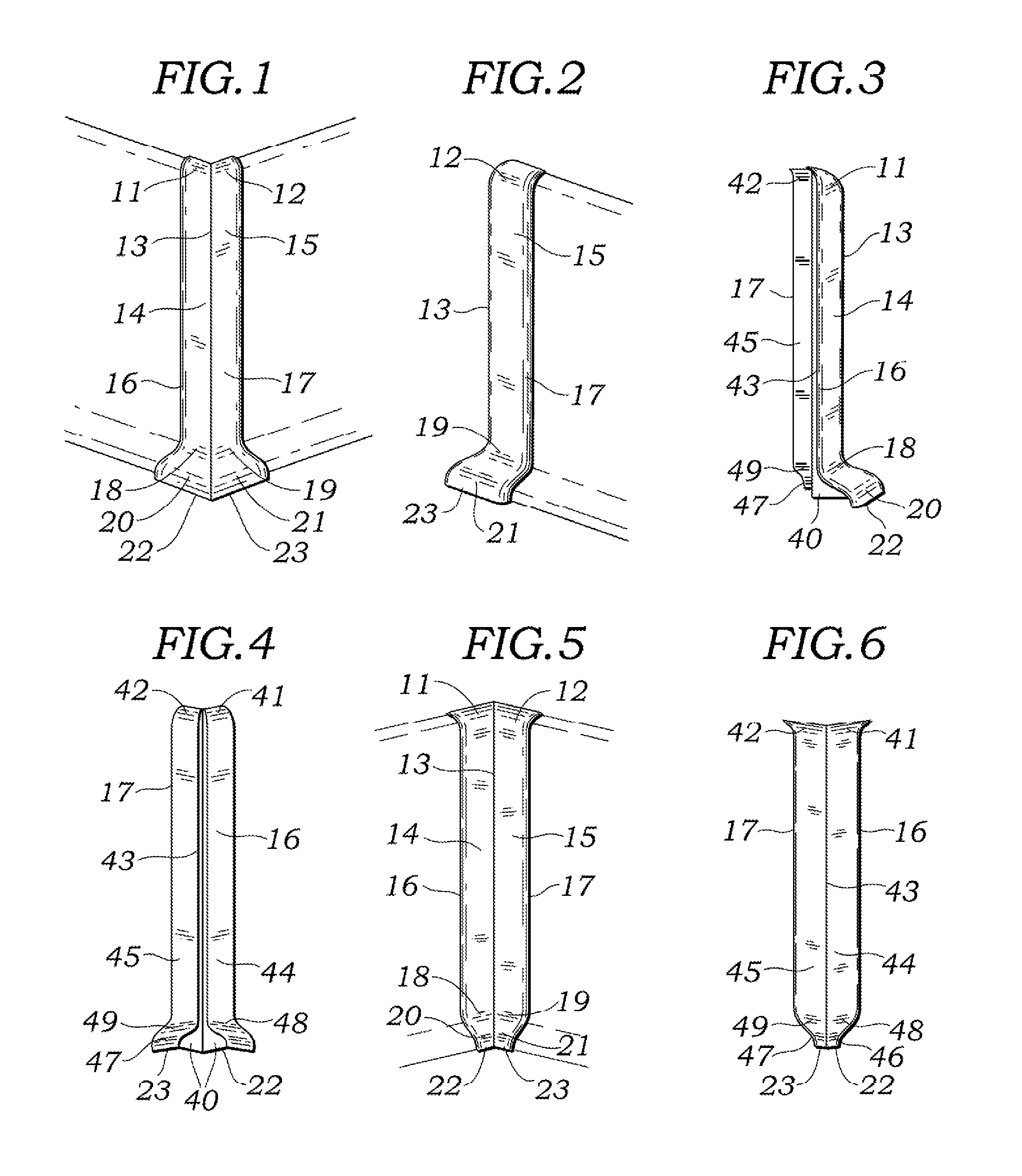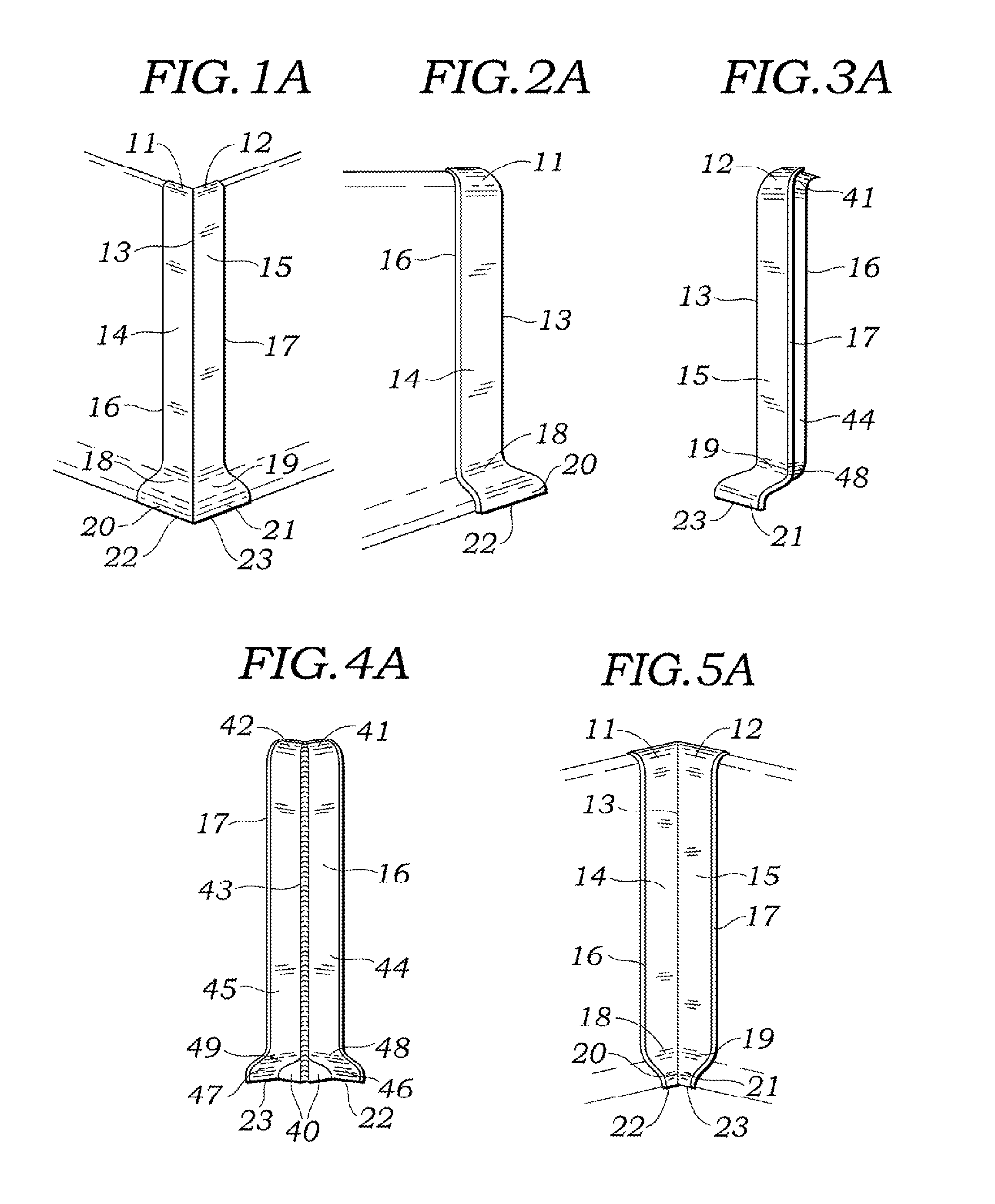Cove base corner cover
a cove base and corner cover technology, applied in the field of cove bases, can solve the problems of high cost, difficult installation of cove bases at intersecting corners, and inconvenient installation of cove bases,
- Summary
- Abstract
- Description
- Claims
- Application Information
AI Technical Summary
Benefits of technology
Problems solved by technology
Method used
Image
Examples
Embodiment Construction
[0025]A preferred embodiment of the corner cover of the present invention is illustrated in FIGS. 1,2,3 and 4, outside corner cover, and 5&6, inside corner cover. The cover has an integrally formed elongated body comprised of thin walls. I prefer the thickness of these walls to be between 0.10 and 0.125 of an inch along with being tapered round to the edges. However the thickness can be varied as thin as a piece of tin or sheet metal or as thick up to ½ of an inch, depending on what is called for. An example would be for use as a very durable corner protector. Each side should be of sufficient horizontal width to overlap and cover cuts made without exact precision.
[0026]There is no one preferred color for the Cove base corner cover. The actual preferred color would be that of the cove base it is being placed over. Matching the color would be ideal, however a color of similar resemblance would suffice quite well. Depending on the shading of light, a perfect match often appears to hav...
PUM
 Login to View More
Login to View More Abstract
Description
Claims
Application Information
 Login to View More
Login to View More - R&D
- Intellectual Property
- Life Sciences
- Materials
- Tech Scout
- Unparalleled Data Quality
- Higher Quality Content
- 60% Fewer Hallucinations
Browse by: Latest US Patents, China's latest patents, Technical Efficacy Thesaurus, Application Domain, Technology Topic, Popular Technical Reports.
© 2025 PatSnap. All rights reserved.Legal|Privacy policy|Modern Slavery Act Transparency Statement|Sitemap|About US| Contact US: help@patsnap.com



